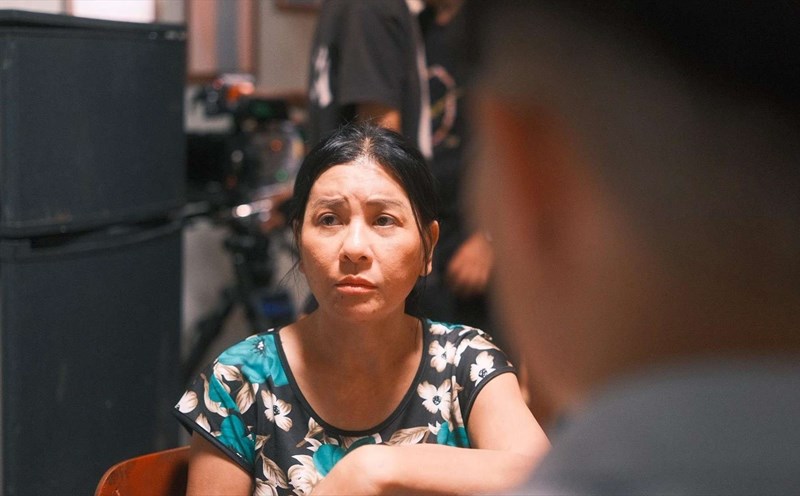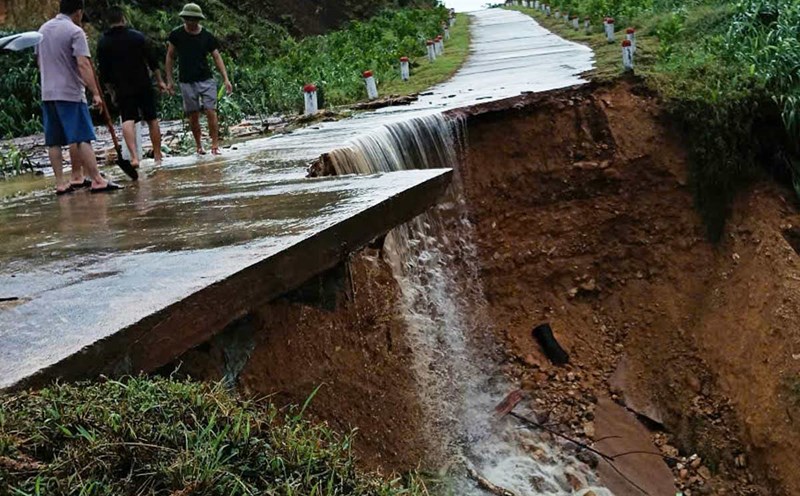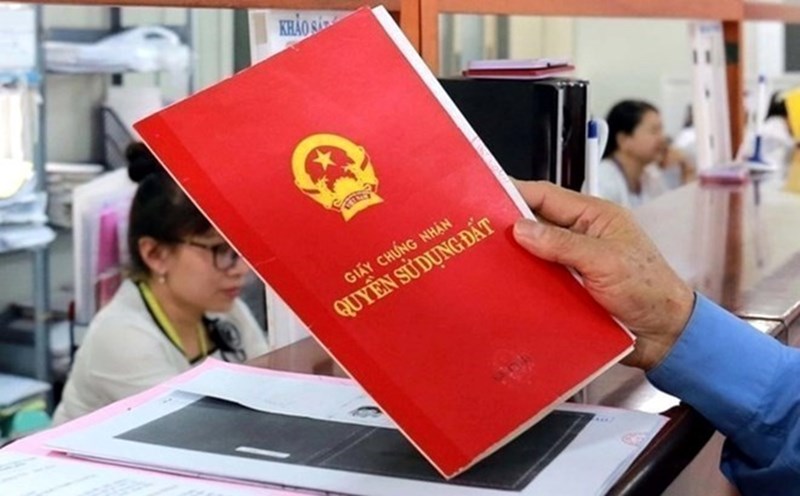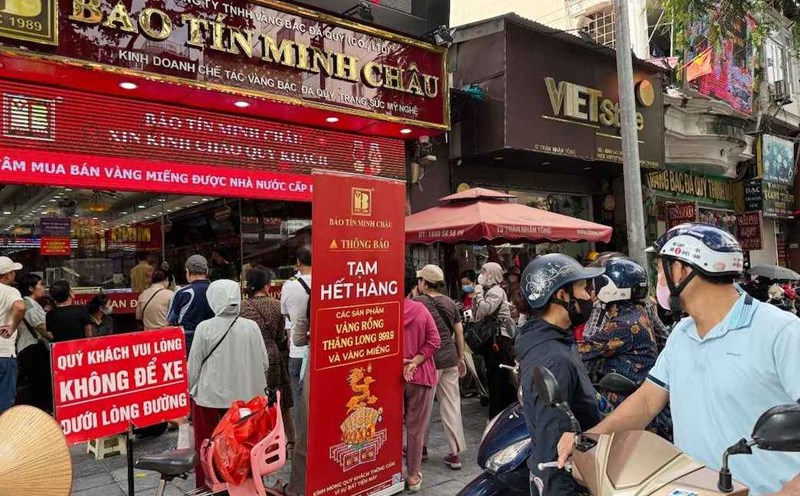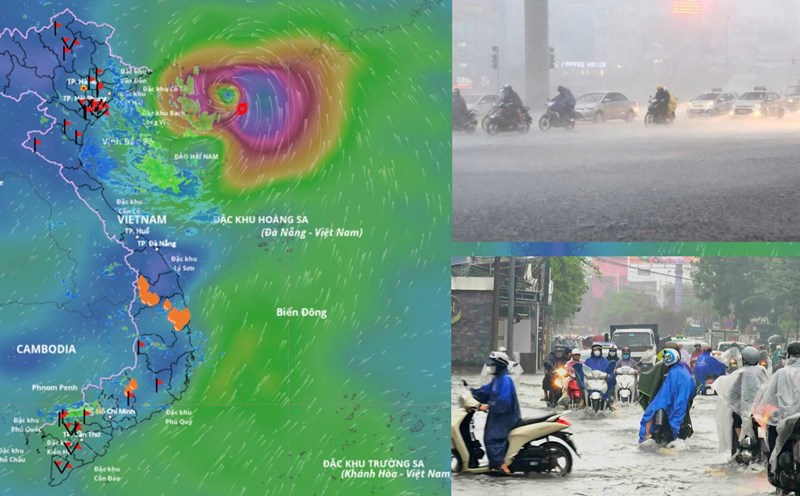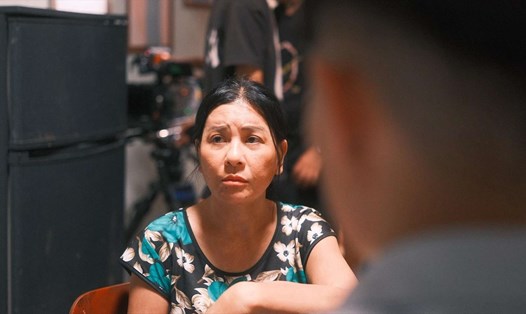At the same time, state-owned film studios, including the People's Army Cinema and the People's Public Security Cinema, have begun to cooperate with the private sector. The result is the appearance of films that have caused a stir, both creating a profound social effect, making a box office explosion, and affirming the production capacity of domestic cinema.
The most typical example is Red Rain (directed by Dang Thai Huyen), a film produced by the Peoples Army Cinema, and commercial release by Galaxy Studio in collaboration with HKFilm. This is a project that has been meticulously prepared and cherished for many years, with investment and support from the General Department of Politics of the Vietnam People's Army and the Ministry of National Defense.
The film was released on the occasion of the country's enthusiastic celebration of the 80th anniversary of National Day, released at the right "golden" time, so it was well received by audiences nationwide and became a box office blockbuster, breaking all records of Vietnamese film revenue ever. However, a part of the audience and veterans expressed concern about how the historical drama preserves some historical details, especially in recreating the battle in Quang Tri ancient citadel... These debates show the level of public interest in films inspired by real events, while also posing a difficult problem for producers: How to balance between historical honesty and fictional and entertainment elements?
The success of Red Rain also has the significant efforts of Galaxy Studio, a private unit distributing films, especially the promotional work is done methodically, professionally and widely, from online to real life, from luxury locations to train stations and public bus stations. The audience grasps the process of making films from pre-production to post-production, what the main actors are usually like in real life, the theme song in the film... All of that creates attraction and the audience's curiosity and anticipation for the film.
The success of "Red Rain" will be a boost for private film businesses to invest more in the field of historical films and revolutionary wars.

While Red Rain was still on air, another film, a combination of the State and the private sector, had just been released and attracted audiences. That is death in the air, a collaboration product between Peoples Public Security Cinema and Galaxy Studio, opening a breakthrough in theme and production techniques. For the first time, Vietnamese cinema exploited the story of no bandits on the big screen, and deployed it grandly, with many extraordinarily intense and thrilling action scenes that were as thrilling as Hollywood action films. The restoration of the plane's setting, creating a narrow space full of pressure along with many cascadeur-free scenes helps "Death in the Air" achieve a real effect, while also proving that the production techniques of Vietnamese films have improved one step.
Other stages from artistic design to sound and music all contribute their own voice, creating a tense rhythm of the film. The cast stands out with the "star" of Thai Hoa box office under the direction of director Ham Tran, creating a film that is both thrilling and has romantic and humorous scenes that help the story soften.
In addition to Galaxy and HKFilm, the Vietnamese film market has also left the mark of many other businesses. CJ HK Entertainment, a joint venture between HKFilm and CJ ENM Group of Korea, had a resounding success with the film Mai (2024) earning more than 550 billion VND in revenue. BHD, Chanh Phuong Film or TNA Entertainment also continuously contribute with commercial and artistic projects, creating diversity in the choice of the audience. The participation of private enterprises, especially when linked with international partners, has helped Vietnamese cinema gradually become more professional in production, distribution and advertising.
However, the road ahead for Vietnamese filmmaking enterprises is not easy. Production costs are getting higher and higher, especially for action or war films that need to restore large settings and complex techniques, while the ability to recover capital still depends heavily on the box office market.
The allocation of screenings is also a hot issue. Many domestic producers have reflected that Vietnamese films will find it difficult to have good screenings and screenings when competing with foreign blockbusters. This is a big challenge, requiring reasonable support policies so that domestic films have the opportunity to reach audiences more fairly. Technical and professional requirements are also increasingly strict.
Looking to the future, many experts believe that the most feasible direction for domestic film production enterprises is to continue to promote cooperation with state-owned units, both exploiting weighty topics and taking advantage of available resources. This model both helps the film have depth in content and increases the opportunity to reach a wide audience.
In addition, film studios need to focus on diversifying genres, not only limited to war or action, but also expanding to science fiction, psychology, or contemporary social topics. Building a smart promotion strategy, taking advantage of digital platforms and social networks will also determine the ability to reach young audiences.
It can be said that the continuous appearance of films such as "Red Rain" or "The War in the Air" marks a rare period of excitement in Vietnamese cinema. This is not only a signal that private enterprises are strong enough to commit to large projects, but also reflects the increasing demand of domestic audiences. Behind the revenue records and compliments, there are still many challenges to overcome. But if they know how to take advantage of opportunities for cooperation, upgrade production techniques and persistently build trust in the audience, Vietnamese cinema can completely move closer to the goal of having truly international "blockbusters".

